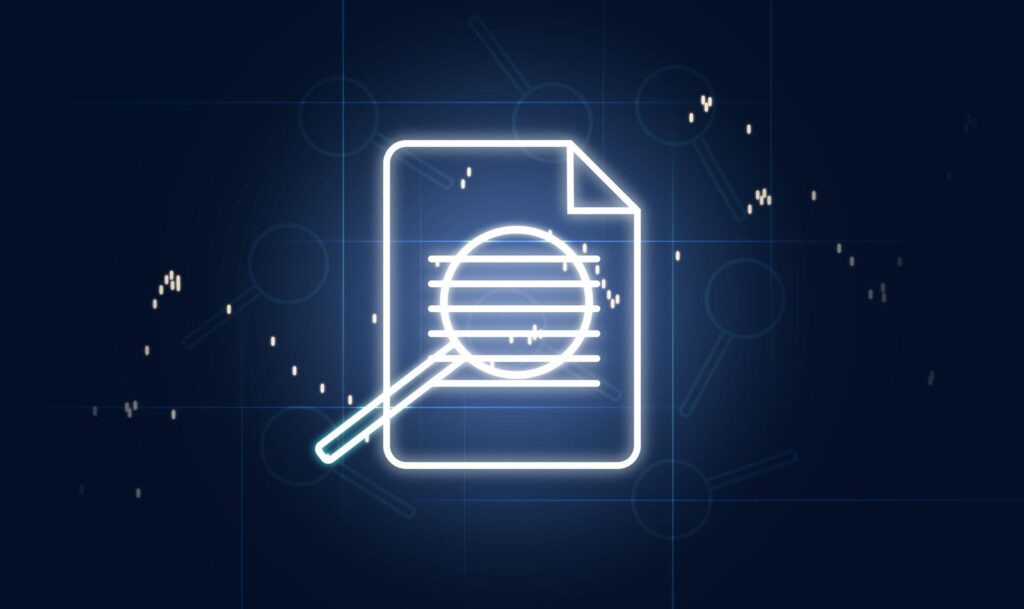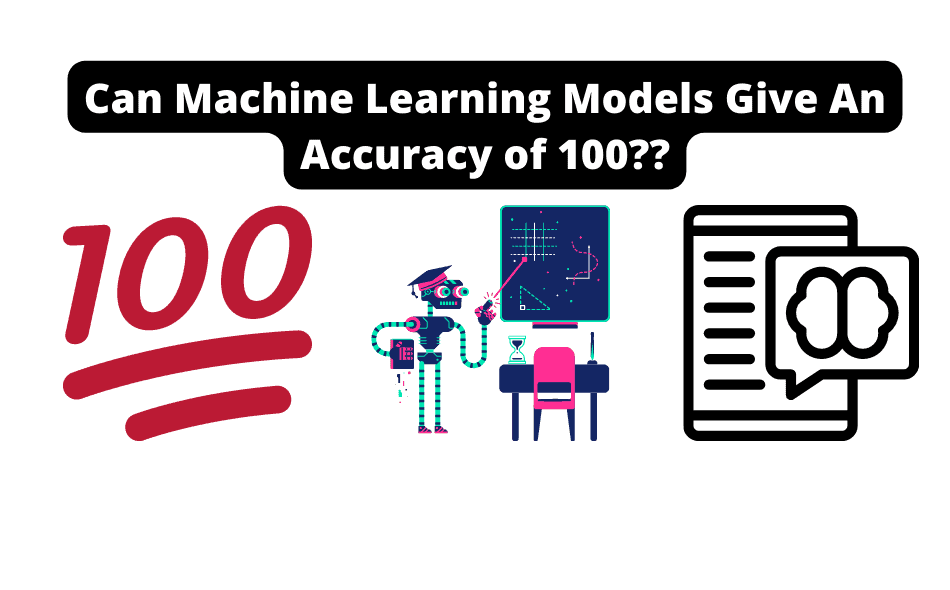Machine learning models have become a cornerstone of many industries, providing valuable insights and predictions based on the vast amounts of data that are out there.
However, as data scientists and machine learning engineers, we always strive for greater accuracy and better performance from our models.
But what happens when we see an accuracy of 100%? Is it truly a sign of a perfect model, or should it raise red flags about potential problems?
In this blog post, we will explore the concept of accuracy in machine learning and the factors that influence it.
We will also discuss why a 100% accuracy rate may not always be what it seems and what to look out for when evaluating the performance of your models.
This post aims to provide a deeper understanding of the limitations and challenges of machine learning and to help you make informed decisions about your models.

Why Even Evaluate Model Performance with Metrics?
As machine learning models become increasingly important in a wide range of applications, it is crucial to have a way to evaluate their performance.
But why is it necessary to evaluate the performance of a machine-learning model in the first place?
Simply because what else would be the alternative?
Without a metric, it would be difficult to determine whether the model is making accurate predictions or needs improvement.
For example, if a model is used for medical diagnosis, it is crucial to know whether it accurately identifies whatever disease you’re chasing after.
Patients may receive incorrect diagnoses and treatments if the model performs poorly, which could have serious consequences.

Also, if someone asked you, would you rather have your medical diagnosis be performed by a model that scores 30% or achieves 80%?
Accuracy is one of the most commonly used metrics for evaluating the performance of machine learning models.
It measures the proportion of correct predictions made by the model compared to the total number of predictions.
For example, if our machine learning model gets 3 out of 10 correct, we can confidently say that our model has 30% accuracy.
Accuracy is not the only metric to evaluate machine learning models’ performance.
Many other metrics, such as precision, recall, F1 score, AUC, and ROC, provide different perspectives on the model’s performance.
Why is 100% Accuracy (Or Any Other Metric) Concerning?
Pursuing high accuracy and KPIs is a common goal in machine learning, but achieving 100% accuracy, or any other metric, as we’ve stated earlier, can be concerning for several reasons.
Let’s take a closer look at some of the reasons why 100% accuracy, or any other metric, can be a cause for alarm.
Insufficient data
One of the most common reasons for 100% accuracy is insufficient data to evaluate the algorithm accurately.
If you only test the algorithm on anything less than 50 samples, you could have “easy” data.
What we mean by this is that as datasets grow, many nuances in the data are captured. The unique situations or hard-to-guess situations within your dataset are represented.
If you have low amounts of data, these situations are never captured, and your algorithm is never tested against them.
While this does not necessarily mean that the model will NOT perform well on unseen data, if you were to double or triple the amount of data you have, you would quickly see your accuracy plummet during testing.
It is vital to have a large enough dataset to evaluate the model’s performance accurately.

Training set accuracy
Another reason 100% accuracy can be concerning, and something that we see all the time with our fellow machine learning engineers, is that the accuracy is being measured on the training rather than the testing set.
The training set is used to train the model, while the testing set is used to evaluate the model’s performance on new, unseen data.
If the model achieves 100% accuracy on the training set but has poor accuracy on the testing set, it may be overfitting the training data.
We do not like overfitting here at EML and always take the model’s accuracy from the out-of-sample results.

Coding error
Simply, 100% accuracy can also indicate a coding error.
For example, the model may be predicting the same class for all examples, or it may be making predictions based on the order of the data rather than the actual features.
You could simply be miscalculating accuracy or comparing predicted results to predicted results.
Another thing that could have gone wrong is you could have “leaked.” You’ll want to venture into the dense topic of data leakage, where you’ve allowed your algorithm to cheat during training and testing.
It is important to carefully check the code and ensure the model makes predictions based on the correct factors.

God-like model
Finally, and something I’ve never personally done, maybe you just “got it right.”
You may have created a god-like model that can perform so well that not even the testing set can beat it.
While I highly doubt this is the case, maybe you’ve pulled off a miracle and created an unbeatable machine-learning model.
(I doubt it, though)
What Does Good Accuracy Look Like During Machine Learning Modeling?
When it comes to evaluating the performance of a machine learning model, it can be challenging to determine what constitutes good accuracy.
The answer is not always straightforward, as it depends on the specific task, the industry, and the data.
However, there are a few things to remember when evaluating your models’ accuracy.

Accuracy is an iterative process:
The accuracy of a machine learning model can change as the model is improved and fine-tuned.
For example, a model that starts with an accuracy of 50% may increase to 60% after the first round of improvements and continue to improve with each iteration.
The goal is to achieve the highest accuracy possible for your specific problem, not the highest accuracy possible.
Different industries have different standards:
The standards for good accuracy can vary widely depending on the industry.
For example, in some industries, a model with 60% accuracy may be considered highly accurate, while in others, anything below 90% may be regarded as unacceptable.
It is important to check the academic literature and the results of others in your industry to understand what constitutes good accuracy in your field.
Clients may have different standards:
Finally, it’s important to consider the needs and expectations of your clients.
Some clients may be happy with an accuracy of 60%, while others may have something in the 90s in their heads for the specific problem.
It is essential to understand your client’s specific needs and requirements and strive to meet or exceed those standards.
Other Articles In Our Accuracy Series:
Accuracy is used EVERYWHERE, which is fine because we wrote these articles below to help you understand it
- High Accuracy Low Precision Machine Learning
- Data Science Accuracy vs. Precision
- Can Machine Learning Models Give An Accuracy Of 100
- What Is a Good Accuracy Score In Machine Learning?
- Machine Learning Validation Accuracy
- How Can Data Science Improve The Accuracy Of A Simulation?
- How Much Does Motion Industries Pay Software Engineers? [Unlock Compensation Secrets] - October 28, 2025
- Mastering Logos Bible Software on iPad [Boost Your Bible Study!] - October 28, 2025
- Improving Software Fault Tolerance: Practical Strategies You Need [Boost Your Software’s Reliability!] - October 27, 2025

